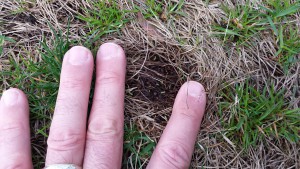A boxwood per day helps keep the doctors away! All of us here in the Plant Diagnostic Lab must be pretty healthy then–since the boxwood blight outbreak in 2013, we get a dose of dead boxwood almost every day.
Landscape, Ornamentals, Nursery, and Turf Edition
Seasonal updates on ornamental, nursery, and turf pests.
Subscriptions are available via EMAIL and RSS.
Companion Website Links:
 Rutgers Turf Blog - Articles on turfgrass diseases and cultural practices for the commercial turfgrass industry. Subscription available via RSS.
Rutgers Turf Blog - Articles on turfgrass diseases and cultural practices for the commercial turfgrass industry. Subscription available via RSS.
 Rutgers Weather Forecasting - Meteorological Information important to commercial agriculture.
Rutgers Weather Forecasting - Meteorological Information important to commercial agriculture.
Plant Plagues: The Rusts Diseases
In this article:
- Impact & Biology
- Symptoms & Case Example: White pine blister rust
- Management
Where would we be without rusts? Rust diseases, to a plant pathologist, are anything but boring. In fact, this group of plant diseases contains some of the most destructive pathogens of vascular plants. Throughout history, rust epidemics have caused famine and wrecked the economies of entire civilizations. Important food and fiber crops affected by rust diseases include bean and soybean, grains (barley, corn, oat, and wheat), asparagus, cotton, pine, apple, and coffee (coffee rust is particularly troublesome in Guatemala right now). Rust diseases also affect a wide variety of ornamentals – landscape plants, greenhouse and nursery crops, Christmas trees – you name it. [Read more…]
Take(-all) it to the Limit
A sample diagnosed with take-all patch of creeping bentgrass was the highlight of the turfgrass submissions to the Plant Diagnostic Laboratory this week. This sample marks the first in the seasonal transition on golf courses from diseases common to late-winter and early-spring (snow molds/yellow patch) to the late-spring and early-summer problems (take-all/brown ring patch). Yes, it was an exciting day for the turfgrass pathologist!
Kyllinga Awakens as Soil Temps Increase
Daily high soil temperatures at the 2-inch depth are consistently getting into the 60s°F. Yesterday, temperatures in sunny locations reached into the upper 60s. This means that the warm-season species are, or will be soon waking from winter slumber.
Winter’s Continuing Legacy
Despite a winter we all want to forget, it never ends if you are a pathologist. Everywhere I look there is plant damage due to the extreme winter. Broad-leaved evergreens seemed to take it hard again this year, particularly some of the hybrid hollies. Frozen roots and heavy winds, along with the need to transpire on sunny winter days, left them in shambles. The injury was visible early and often.
Gettin’ Over The Winter Blues
The Plant Diagnostic Laboratory is in recovery from SAD – not seasonal affective disorder – but sample affected disorder! Snow cover equals very few sample submissions, so with the exception of our talk show circuit, life in a plant diagnostic facility is pretty quiet in the winter. While it is certainly a pleasure to see everybody at the winter meetings, I would much rather sit in the lab looking at dead stuff than stand in front of everybody talking about it. Fortunately, as the weather improves from week to week, the samples are starting to roll in.






